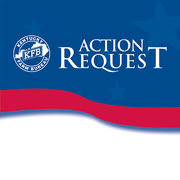Proposed USDA Horse Protection Rule
Proposed Rule:
USDA is proposing to amend the Horse Protection Act to change the process under which horse inspections at horse shows, exhibitions, sales and auctions are conducted. Comments on the proposed rule may be submitted electronically at Regulations.gov, Docket number APHIS-2011-0009, through midnight, September 26, 2016.
USDA is proposing to significantly change the inspection process to allow USDA APHIS to assume the training, licensing, and monitoring of third party independent inspectors, or designated qualified persons (DQPs), to conduct inspections to detect soring of horses. USDA also proposes to amend the regulations to prohibit the use of pads, substances and action devices that may cause soring of horses at shows, sales and exhibitions. Currently the Horse Protection Act makes it illegal to "sore" a horse by use of blistering agents, burns, cuts or lacerations, use of tacks or nails, or the use of any substance or device resulting in physical pain, distress, inflammation or lameness when the horse is moving.
The proposed rule is directed primarily at gaited breeds; specifically Tennessee Walking Horses that possess a unique lateral gait. USDA states the current DQP program for inspecting gaited horses is not adequate to ensure that horses are not being sored for the purposes of enhanced performance. However, the Tennessee Walking Horse Association notes that it has put in place inspection measures and penalties that have resulted in anti-soring compliance of more than 95 percent by owners. Regardless, Farm Bureau is committed to the proper care and welfare of all livestock and opposes the intentional soring of horses.
Concerns with the proposed rule are several. Currently, inspections are seen as being very subjective, and not based on a reliable, objective inspection methods to detect evidence of soring. The only objective test being used at some shows is the use of portable X-rays of the horse's pastern area. Determining scaring in the pastern area is also inconsistent and subjective. The only reliable determination of scaring is to have the area biopsied, and many horses disqualified for scaring in recent shows that did have a biopsy taken were ultimately vindicated. Visual observations for scar rule violations and probing for flesh and joint sensitivity are too variable to reliably discover a sored horse. The proposed rule continues the use of subjective inspection methods, and fails to provide any evidence the proposed changes will be objective and fair. It should also be noted that few violators have been successfully prosecuted under the process being proposed because they are not reliable and objective inspections based on scientific techniques.
Another concern is the vagueness of who this rule might impact. The proposed rule would ban action devices. As noted in the proposal, this could include "chains, pads, boots, foreign substances or other devices that could cause friction or pain." Training programs for many species, including numerous horse breeds, utilize training aids that could be deemed action devices and ultimately banned. For example, would a bit on a halter be considered causing friction or pain to the horse during training? The concern is this vagueness could lead to other accepted training devices being banned if this rule is adopted.
The proposed rule would also move inspections from industry-trained inspectors who have experience in working with horses, to a new cadre of inspectors who would be veterinarians and veterinary technicians trained by USDA APHIS on the rules and standards of conduct. Currently, those veterinarians and vet technicians do not have to have large animal experience, and are only required to attend a 40-hour training session before being approved to officially screen and inspect horses at shows, exhibitions and sales.
Action Request:
Farm Bureau leaders are urged to submit comments in opposition to this rule as proposed. Comments must be submitted no later than September 26, 2016. To submit comments electronically, click here.
Talking points to consider:
- Farm Bureau is committed to the proper care and welfare of livestock, including horses, and opposes the soring of horses.
- The intentional soring of horses is already prohibited in the Horse Protection Act passed by Congress.
- The proposed rule fails to improve the inspection process and continues the subjective protocols.
- Congress currently has legislation pending that would objectively address the issue of the soring of horses through science-based inspections developed and peer-reviewed by veterinarians.
- The vagueness of the proposed rule opens it to implementation far beyond just action devices that may be used in the gaited horse industry. Any training device could ultimately be considered and eliminated. Prohibited substances are not well defined in the proposal.
- Action devices (a looped chain weighing less than six ounces) provides a tactile aid to the striding horse. A padded shoe can serve several purposes, including providing therapeutic relief to an injured horse. Training tools can safely and ethically be used by horsemen to improve the horse's health and welfare.
- Any proposed rule for horse inspections must be based on objective protocols based on reliable scientific criteria. These protocols must be able to effectively distinguish between legitimate training techniques and illegal soring practices. X-rays, tissue biopsies and blood testing would be examples of objective scientific procedures.
- New inspector criteria could severely limit the availability and affordability of inspectors to serve shows and sales. USDA APHIS should revise criteria to include individuals with actual equine knowledge and develop reasonable conflict of interest standards to maintain the integrity of inspections.
- Objective, scientifically-based evidence of soring will enable USDA APHIS to effectively act upon violations and enforce penalties against those trainers and owners who violate the law.
You can also cut and paste comments direct to Regulations.gov by clicking this link. As always, personalize your comments to relate how this rule can affect your farming operation.
